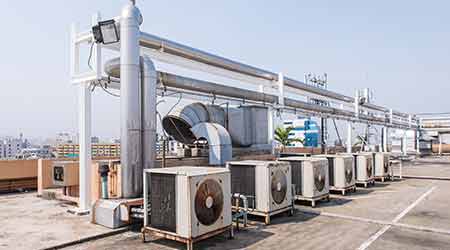Contractors Key in Roof Replacements
Part three of a four-part article on roof replacements
‘Any contractor will do’
Most roof replacement projects must go through a bidding process. Selecting a roofing contractor is based heavily on the bids that are submitted, and the most important factor — often the only factor considered — is the cost. But cost does not determine the long-term success of the project. Instead, success depends more on the performance of the installer.
Poor workmanship is one of the leading causes of roof failures, so managers must properly vet the contractor before making a decision. Review bids carefully to make certain the roof system being bid is the one specified.
Equally important is installer certification. Most roof manufacturers certify companies to install their products. As a result of this process, the contractor’s employees receive the proper training in installing the roof, and the manufacturer affirms that the contractor has performed up to its standards on past projects.
Managers also need to make certain the contractor is insured and properly licensed. Just because a contractor says it is does not necessarily make it so. Obtain a certificate of insurance from the contractor as part of the bid package, and confirm it with the insurance company. Similarly, managers must require bidders to provide license information and verify it with the appropriate state or county office.
The bid package also must include information about past projects the contractor has performed and a list of references, as well as the number of years the company have been in business. Each reference should include the type of roof installed and the date of installation, as well as contact information for each reference. Most importantly, managers must contact each reference or, better yet, visit the facility.
Overlooking the warranty
Too often, the only factor managers consider or even remember concerning a warranty is its length. Every roof comes with a warranty, yet most warranties bought and paid for by a building owner never have a claim completed against them. While claims might be filed, they often are dismissed, since they are for excluded items or because the owner has failed to meet the requirements necessary to keep the warranty in place.
Warranties spell out the steps owners and managers must take to keep the warranty in effect. Twice yearly inspections, limited foot traffic, debris removal, drain cleaning and prompt repairs all are typical warranty requirements. It is important to read and understand these requirements, and it is equally important to document all activities in the event of a warranty claim.
Before settling on a particular contract, managers also need to read the offered warranty closely. Who issues the warranty, the manufacturer or the installer? This is an important question because it is more likely that the roof manufacturer, not the installer, will be in business over the length of the warranty.
Is the warranty for materials only, or does it include labor? What are the exclusions? Is damage to the facility and its contents covered in the event of a warranty-related roof failure?
When facing a large bill for repair or replacement, a manager does not want to find out that the warranty is worthless or has been voided.
James Piper, P.E., is a national consultant based in Bowie, Md. Piper has more than 30 years of experience with facility maintenance and engineering management issues.
Related Topics:















